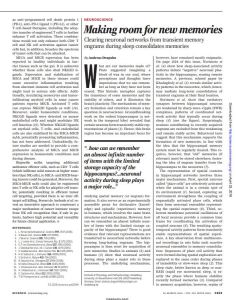Join getAbstract to access the summary!

Join getAbstract to access the summary!
Andreas Draguhn
Making Room for New Memories
Clearing neuronal networks from transient memory engrams during sleep consolidates memories.
Science, 2018
What's inside?
During sleep, memories move from the hippocampus, where they’re formed, into long-term storage.
Recommendation
When you go to a new place, special neuronal cells in the hippocampus – aptly named place cells – are in charge of remembering it. Recent monitoring of neuronal activity suggests that sleep plays a major role in clearing older spatial memories out of the hippocampus to make room for new ones. During slow-wave sleep, these old memories get transferred to the neocortex by an, as yet, unclear mechanism. If you ever felt the need to justify why you’re going to bed early, getAbstract recommends this article for you.
Summary
About the Author
Andreas Draguhn is at the Institute for Physiology and Pathophysiology at the University of Heidelberg.


















Comment on this summary